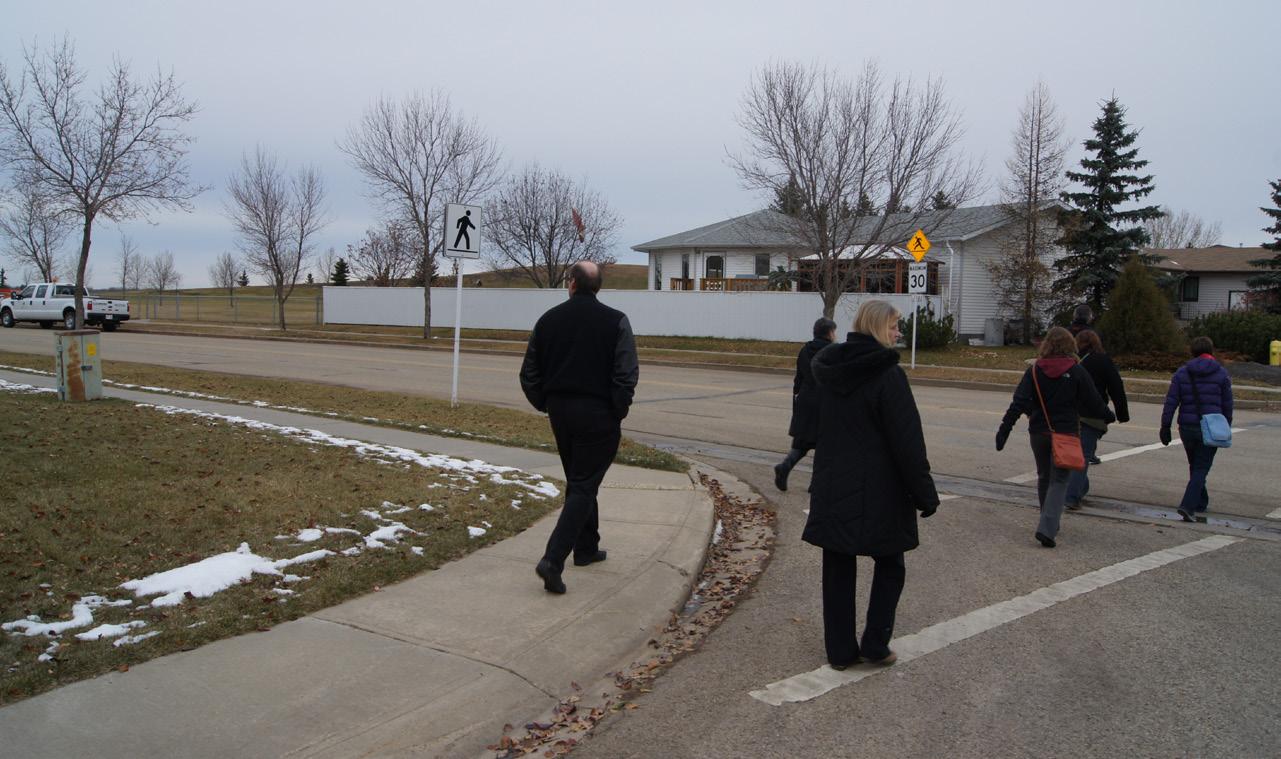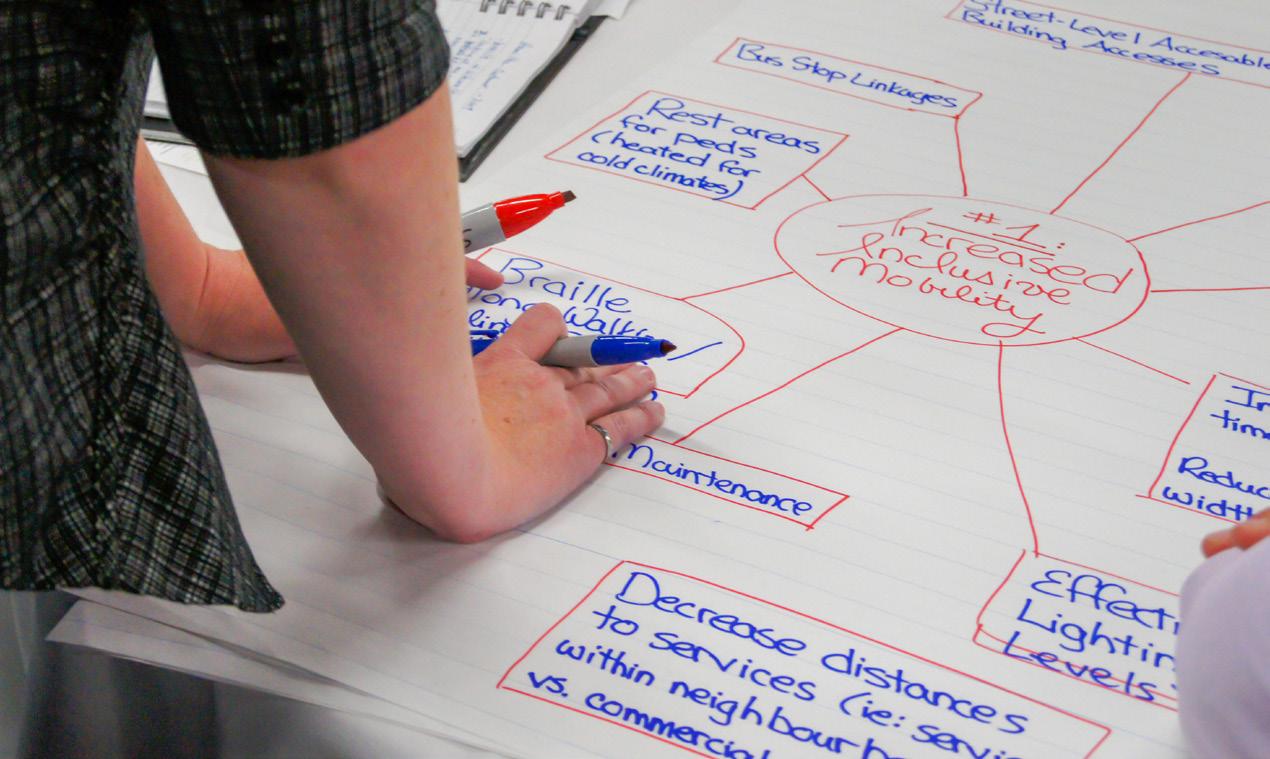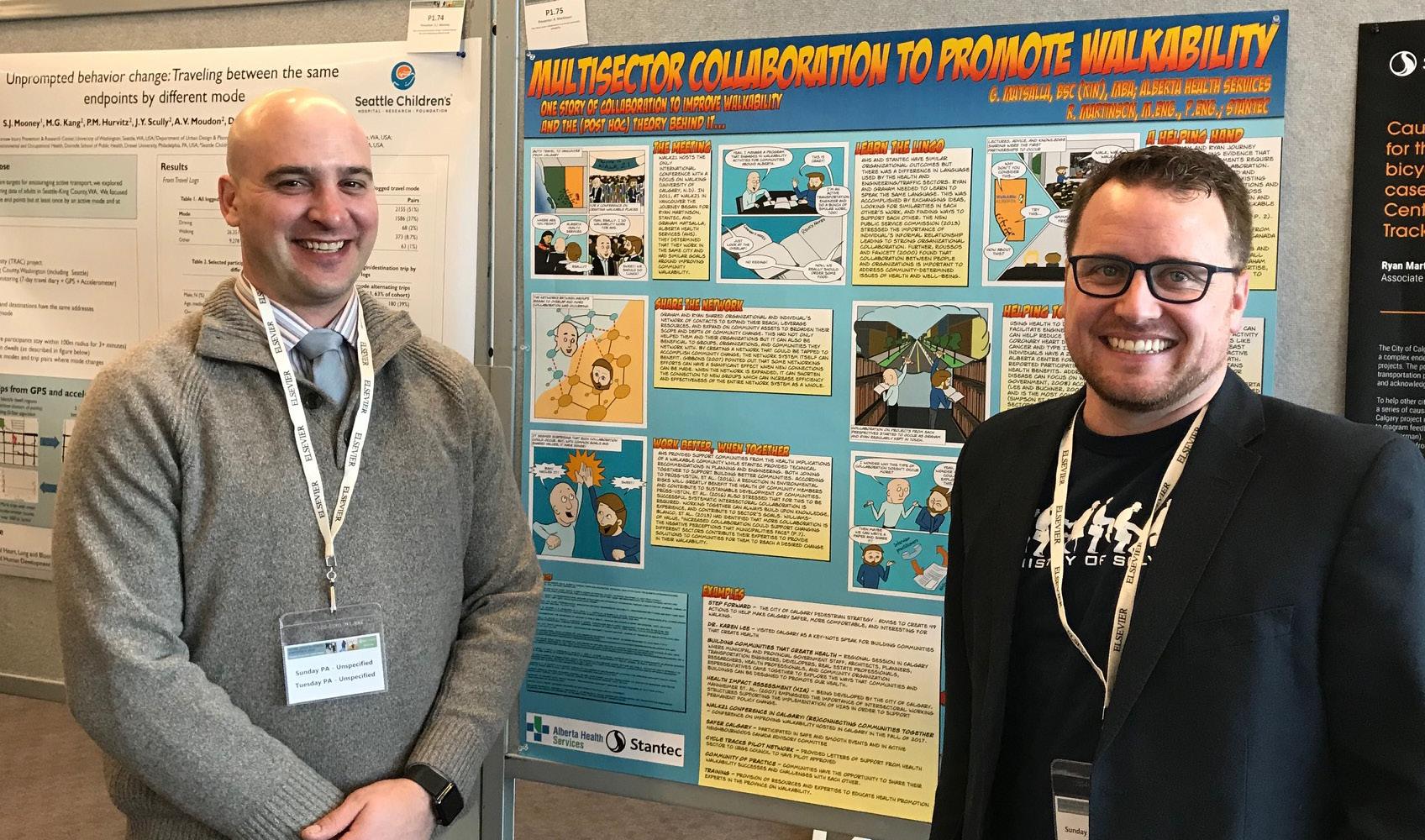
7 minute read
TRANSPORTATION & HEALTH JOIN FORCES FOR GREATER IMPACT Collaborating with the health sector to achieve shared goals
BY GRAHAM MATSALLA, ALBERTA HEALTH SERVICES
There is a feeling that many sectors share: the expectation to accomplish more with less. One way to approach this problem is by collaborating with other sectors to accomplish shared goals. For the health and transportation sectors, the opportunities for collective impact are plentiful.
Advertisement
HEALTH AND THE BUILT ENVIRONMENT
Evidence has shown that the built and social environment of a community influences the health of all community members, including mental health as well as physical activity. Though it may not be an obvious link, the built environment and community connections relates closely to my work in the area of mental health promotion. First, it is important to recognize that mental health means more than just a lack of mental health illness; it also includes a holistic sense of well‐being, including positive mental health practices. Then we can see that mental health can have a direct relation to healthy community design. Positive mental health is important for physical health of community members, educational achievement, the social capital of communities, and for the economy. Physical health can also influence mental health. One specific area of mental health promotion that we are working on is looking at how to prevent social isolation and loneliness in communities to increase community health. There is evidence to support connections between social cohesion, physical health, depression, and healthy weight. It is interesting to see the link between mental health, physical activity, and transportation.
Many people know that physical inactivity is a health problem but they do not realize the extent of the problem. In 2014, nearly 6 in 10 adult Albertans were overweight or obese. Obesity has increased worldwide and with it comes an increased risk for chronic conditions. There have been many changes in how the health promotion field has approached chronic disease prevention through the promotion of physical activity. The complexity of the obesity epidemic calls for a systems approach to address the issue, including interdisciplinary collaboration and bridging research, education, policy, and action, among other components. Individual behavior is only part of the problem. Physical activity promotion has more recently looked beyond individual behavior change and encouraging positive behaviours. Using a systems approach, our field now considers the built and social environments of communities as a key factor for improved community health. This spans from promoting active transportation and community walkability to the greater challenge of creating communities that make active transportation the easy choice. This level of change requires the efforts of many individuals, organizations, and sectors within a community.
One step to tackle this challenge and create sustainable community change is to find opportunities for the health and transportation sectors to work together. A collective impact approach (see sidebar above) to engaging community stakeholders and addressing community walkability will not only share the workload but will also create the community buy-in required for sustainable community change.
A PROGRAM FOR COLLECTIVE IMPACT: WalkABle Alberta
WalkABle Alberta, a provincial Alberta Health Services (AHS) chronic disease prevention program, shows us collective impact in action. This program aims to increase physical activity and reduce chronic disease by creating more walkable communities. WalkABle Alberta works with provincial and local walkability champions and community stakeholders to build local strategies that help create walkable communities.

WalkABle Alberta Process of Community Engagement
Using a process of community engagement (see above), the goal of WalkABle Alberta has been to complement the great work already being done in the community for improved pedestrian environments. From 2011 to 2015, WalkABle Alberta engaged AHS staff and provincial and community stakeholders to collect and align local strategies, plans, and actions for more walkable communities.

A WalkABle Alberta community visit in Camrose, Alberta
There were many activities that WalkABle Alberta could take that supported community walkability improvements. These included: walkability presentations, interactive community workshops, community walkabouts, community meetings, feedback sessions, strategic planning sessions, facilitated discussions, presentations to council and other community decision makers, and advice to local committees/group.
RESULTS OF WalkABle Alberta
The results of what WalkABle Alberta over 2011–2015 did for local municipal leaders, planners, and transportation professionals varied greatly depending on the community and its needs. The greatest successes came when a collective impact approach was taken to heart. Instead of adding to each other’s workload, we found ways to accomplish our own goals by accomplishing the goals of others. Some examples include:
• Created walkability-focused committees to advocate for community walkability, identify priorities, provide direction to the municipality, and increase connection or collaboration between community stakeholders. • Developed wayfinding tools like signage and trail maps.
• Organized community events to promote walking and active transportation such as Full Moon Winter Walk days, commuter challenges, and UWalk challenges.
• Engaged community stakeholders by conducting surveys, providing information events/sessions, and developing promotional campaigns to increase walking.
• Helped increase the importance of walkabilty in municipalities. Activities completed by municipal councils and staff include: Added dedicated municipal representatives to walkability committees; Added walkability/active transportation to municipal administrators’ role or mandate; Developed and approved dedicated walkability/active transportation plans and policies; Increased allocation of municipal funding to address walkability; Improved current standards and practices (e.g., updated snow removal by-laws; implemented pedestrian/cyclist counts; and identified walkability requirements for new developments); Developed and implemented a triage plan for improving sidewalks, pathways, crosswalks and connectivity; Increased coordination between municipal departments
• Changed the built environment through sidewalk improvement, pathway creation, and crosswalks creation or improvement at high traffic and/or high risk pedestrian crossing areas.

Community stakeholders working through the International Charter for Walking at a community engagement session
COLLABORATING WITH HEALTH PROFESSIONALS
Looking at the results above, you would be forgiven for assuming it was a program initiated by a transportationfocused organization rather than a health promotion program. It’s clear that both of our sectors have much to gain from working together toward common goals. If you have a transportation project that touches mental or physical health issues, consider joining forces with the health sector collectively accomplish more with less. It can be a challenge to know who can help you and how you can get a hold of them. I recommend looking for local or provincial health promotion professionals, often based in a public health department or agency. You may find health promotion professionals working in the area of built environment and/or active transportation through mental health promotion, injury prevention, and public health inspectors. Another approach is to look at health promotion issues being addressed in your community like social isolation, falls prevention, and new community development and find the groups working in those areas.
It might not be an obvious connection to make for most people but now you have the advantage of seeing how different areas of the health sector can relate to you and the work that you do. In conclusion, working in collaboration with various community stakeholders including transportation professionals, I have learned so much about an area I had very little expertise. By being willing and interested in collaborating, we have worked together for greater collective impact that helps us all meet our goals. This idea is summed up well by Helen Keller: “alone we can do so little; together we can do so much.”
COLLABORATION IN ACTION

Graham and Ryan present a conference poster on their collaboration
How Ryan Met Graham: Ryan (transportation professional) and Graham (health promotion professional) connected at a Walk21 Conference, identifying shared interests and organizational goals.
Learning the Lingo: They created common language by exchanging ideas and looking for similarities in each others' work.
Shared Network They shared their networks of contacts to expand reach and leveraged resources.
Working better, when together:
• Ryan offered to review the WalkABle Alberta community reports and provide technical recommendations. These recommendations spoke to transportation professionals in the communities. Combining Ryan’s technical input with Graham’s recommendations created a more rounded message for stakeholders from different sectors. This made the community reports more robust and effective.
• Graham provided a health perspective on implications of walkability for various projects that Ryan was working on.
• To broaden knowledge and experience in his sector, Graham was asked to train health promotion professionals throughout Alberta on walkability, active transportation, and the built environment. Ryan supported Graham by providing feedback on education design and tools for measuring the built environment, creating a more effective and technically rounded training program.
Changing How We Practice: In working together, Graham and Ryan alleviated misconceptions of how their respective sectors function and what their priorities are.
Graham Matsalla is a Mental Health Promotion & Illness Prevention Team Lead in the area of Provincial Addiction & Mental Health for Alberta Health Services. His health promotion experience has been with communities and neighbourhoods promoting physical activity through active transportation and built environment improvements. While working to prevent chronic disease on the WalkABle Alberta project, he helped communities increase walkability by improving physical and social environments.










